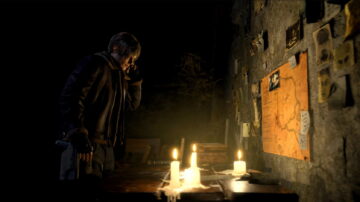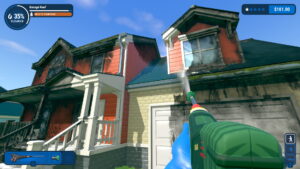Roguelikes these days are like RPGs, they are a genre of games that can fit so well as an additive element to other genres.
And this is the case with Against The Storm. Developer Eremite Games attempts to make a city builder with roguelike elements, or rather roguelite- there is meta-progression here.
The game’s been in Early Access since last year, first released on Epic Games Store, and now a year later it’s heading to Steam, still in Early Access.
But you’d be surprised how fleshed out Against The Storm is already in this state. It’s a refreshing take on a city-builder: engaging, challenging yet not outright punishing, and still leaves you satisfied after placing numerous buildings after buildings. Essentially, the best bits of city-building boiled down to be replayble, but still substantial when played in a long sitting. And it took some elements of a roguelite to get there.
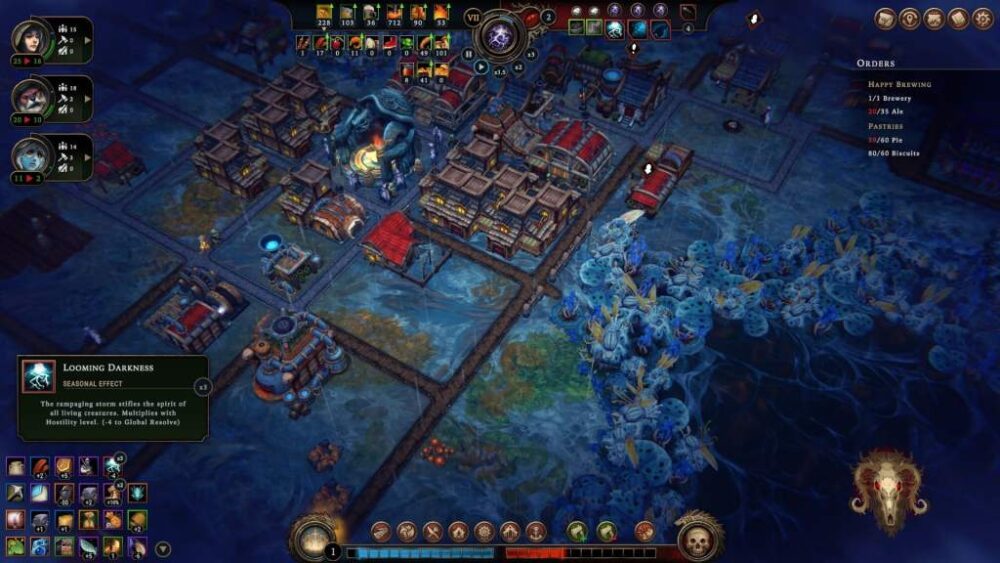
Neverending Rain
So how the heck does a roguelike/roguelite city-builder work? The answer is simple: lore. In Against The Storm, this fantasy world is eternally cursed with rainfall. There is a remnant of civilization left, living in The Smoldering City where the Queen resides.
And you are her Viceroy, tasked with building multiple cities, where folks of various species settle, to gather resources to be sent back to The Smoldering City. But as time passes, the Blightrain will arrive, a flood that washes away all the settlements. And this is how a cycle, or a run, works.
The world-building here is fantastic in that it shows more than it is telling, communicated through flavour texts and gameplay rather than cutscenes and lore dumps. It’s not something I expect from a city builder, but it’s paramount to justify the gameplay loop. And the devs did more than just that with its lore.

The Best Parts Of A City-Builder Is The Early Game
Against The Storm isn’t about building one big city that continues to sprawl and sprawl. Rather, you have to keep building many new cities over and over. City-builders are generally a sandbox but Against The Storm goes against this by taking more roguelike elements.
Instead, you must “win” each city by completing objectives and fulfilling your citizen’s needs until your reputation, the blue bar, fills all the way up. And you must do so before you “lose”- where the Queen gets impatient with your slow progress, indicated by having the red bar fill up.
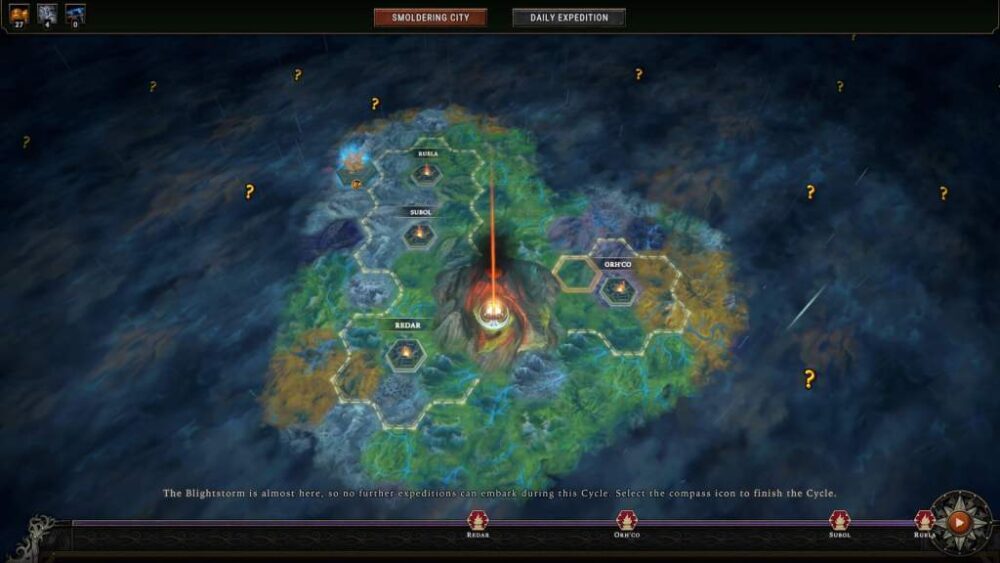
Once you go through the tutorial and begin your first full cycle, you get to pick the location of where you want to build the city, then pick a caravan of starting folks (of various fantasy races) and resources, and opt to carry some bonus resources should you want.
After loading into the map, the game starts while paused (good!), where from there you can see what resources are available in the center of the map, where should you expand, and start planning the initial build order before unpausing.
The central area is surrounded by trees and other flora at first, but you can explore the area by chopping off the trees and clearing up land to open glades. By hook and by crook, you have to clear out land- you need the space for homes and you really want to search for new resources that you can gather before your starting material run out.
Like many city-builders (except Cities: Skylines), the early game is where the best bits are. You get to plan what will your creation be, and explore the lands that provide you new information that will make you alter some of that original vision. Against The Storm nails this, making the first 10 minutes of starting a new town always feel exciting, and easy to get the ball running without the risk of jeopardising the run because you forgot to place one thing or two before unpausing.

Deck The Halls
From here, you will have to chart out how you build your impermanent city. Set up various foraing huts to gatehr the raw resources, then build multiple industrial buildings to produce building materials, then turn them to food, clothing, services and goods to be used by the people, and if there are extras, can be sold off at a trading post.
Each of the races have different needs and wants- Humans will be happy if there are pies and a place to practice religion while Beavers want biscuits and a place to indulge in luxury, for example. And you want to get them happy, as pushing them above their resolve threshold from providing their needs and wants will earn you reputation- the blue bar progress.
Reaching milestones of the blue bar lets you unlock blueprints. And this is where the other bit of roguelite kicks in. Against The Storm doesn’t have a tech tree per se, but the buildings contribute to different parts of the supply chain. And outside of some essential buildings, what you can build in a city depends on what blueprint you have, and you get those randomly.
This could have been a game-breaker- replacing a tech tree with random building draws sounds awful on paper. But the way Against The Storm implements this feature addresses any of such worries, and I found it fun and interesting as a result.
There will be runs where you never draw a Small Farm that lets you farm grain from farm fields. But you might have drawn a Plantation instead, which lets you farm berries instead. There will be runs where you have no source of coal for a mine, but you can draw a Kiln and use the abundance of wood to make coal.
Also, the same material, product or goods can be produced by multiple buildings, though some buildings are more efficient in doing so than others. You can get a Carpenter to turn woods to planks if the Lumber Mill isn’t showing up when you pull your not-card-but-blueprint draw.
But the Lumber Mill is better at producing planks.
But there might be situations where you want the Carpenter over the Lumber Mill- the former can produce decent Simple Tools, very much needed in exploration, something the latter cannot.
Plus, all the manufactured goods have multiple recipes. If you don’t have grain for ale, you can make them using gathered herbs, for example.
When you play enough runs of Against The Storm, the beauty of the system will unravel itself. You can take different paths to create the same goods, and you will have to try out all the different recipe combinations as there’s no guarantee you have all the resources in any run. This keeps subsequent playthroughs fresh, and keep players engaged and on their toes rather than having to just do the reliably working build order over and over because it always works.
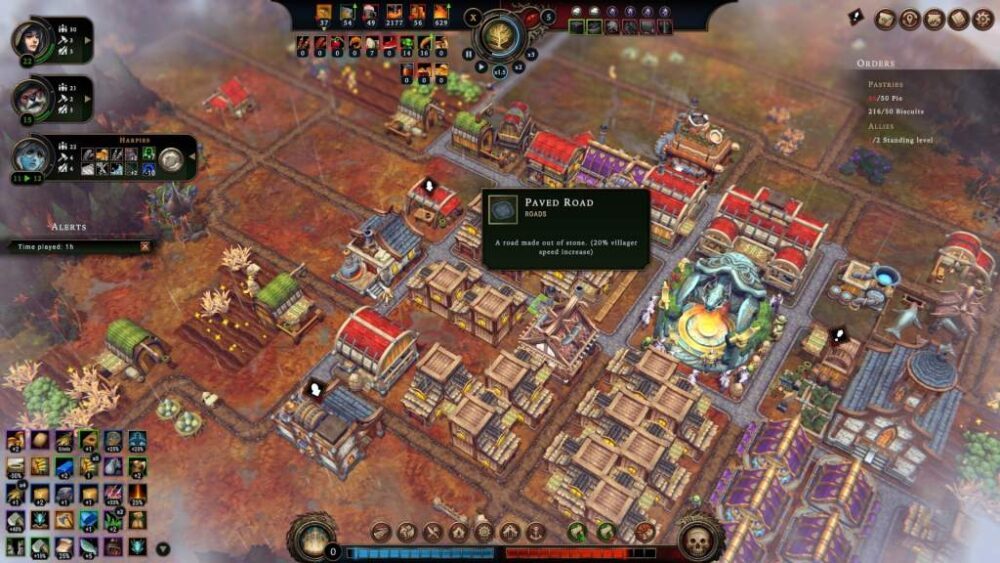
That said, there is a learning curve to Against The Storm. You will have to internalise how the supply chain works to not mess up in taking redundant buildings (like having both a Carpenter and a Lumber Mill when you should have gotten a building that can produce bricks like a Brickyard). There will be a few runs where you lose entirely because you don’t have the right buildings to produce the right materials and you don’t know which are the right buildings to begin with, which is rough and unfortunate.
But once you clear that hump you’ll find joy in adapting your playstyle with how the metaphorical cards are dealt to you.
If there is a way to review what building is available in your permanent pool, that would be nice.
If things do go wrong, it won’t go into a death spiral or any other severe punishments seen in survival city-builders. Rather, you start to slowly lose your villagers. The rate of them leaving is gentle enough that it won’t hugely disrupt your current setup of workers, and gives you ample time to respond and make the right changes to keep them happy, or at least content, on staying. At least in the normal difficulty this is the case.
A session of Against The Storm, that is building a city until you win or lose, can last about an hour, but not more than that. It doesn’t drag too long, you will always be clicking and checking if everything’s gone to plan rather than just passively watch the town do its thing. The challenges the game throws at you, and the tight objective-based gameplay really trims out the fat of city-builders. Some folks, me included, enjoy the fatty goodness of those low-stakes games, but Against The Storm will keep you engaged throughout its time limit and knows when to stop.

As you complete cities and cycles, you’ll earn resources to upgrade The Smoldering City. This is a tech tree of permanent upgrades that not only gives you more flexibility in playing, but also unlocks new mechanics altogether. You’ll later find that you will be competing for different plots of land against other factions, that also can be a good trading partner, for example.
And this is just touching the surface of the many layers of gameplay Against The Storm presents you. There’s a perks systems (Cornerstone) that can augment the way you play, like giving you bonuses when a villager leaves or dies. There’s the three seasons where different buffs and debuffs will be in affect.
Then there is also Blightrot and Corruption, a mechanic only available in the higher difficulties which adds consequences for pollution, and you have to set up the game’s equivalent of fire-fighters. In a world of eternal rain, your fire-fighters fight with fire, to burn off the nasty things that are attached to polluting buildings during the storm. Again, the effort in world-building here is amazing to see.
Against The Storm won’t let you rest on your laurels, every second passes is a decision to be made somewhere, and for some folks, that’s what a good game should be: letting you keep making meaningful decisions.
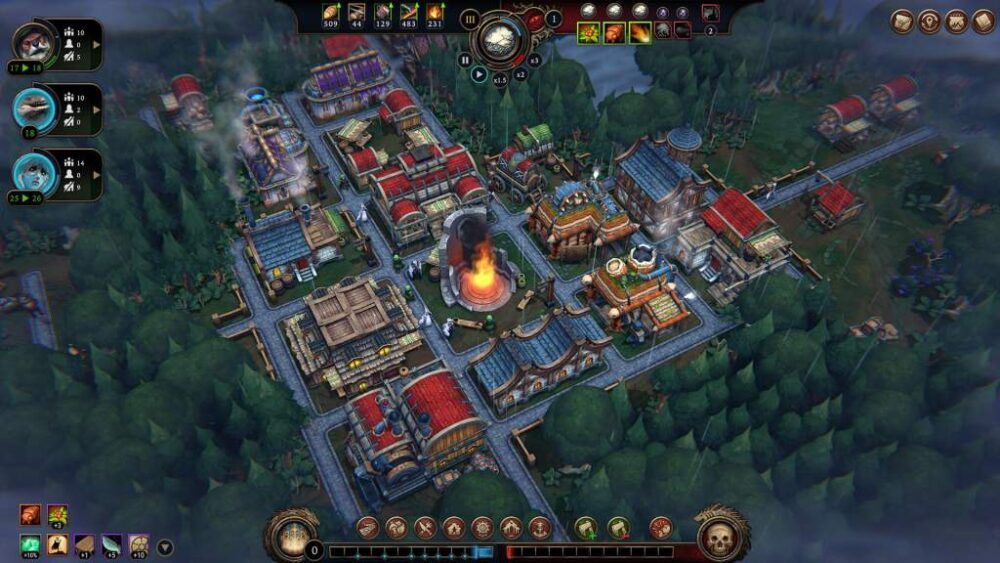
Playing Against The Storm, weirdly, reminds me a lot of Dota of all things.
Now hear me out here, I’m not that crazy thinking of it as such. First, the graphical art style has a lot in common with what you expect a mod of Warcraft 3 looks like. The colour palate is bright, character animations are exaggerated to be clearly seen from up high above, and the UI has all the trimmings, decorations and accoutrements of a game from the early 2000s.
Each game of Against The Storm can feel as long as a match in a MOBA game, with a lot of push and pull where you can be in the lead for the win (the blue bar is progressing well) or be so far off the pace (the red bar is processing more than it should), and at any time of the game, the tides can turn.
You can pull in a clutch by suddenly getting a burst of objectives all being done at the same time. Or suddenly get overwhelmed when you lack the resources but opened up a glade with a dangerous debuff active.
What’s New For The Steam Release?
Against The Storm actually doesn’t have any big headlining feature updates to coincide with the Steam release. Which is odd at first.
But there is a reason. The devs have been consistently updating the game twice a week with a steady dose of new content and gameplay fixes and changes, most of which come from community feedback. The build I played for this preview piece has the Haunted Ruins update, and by the time you read this, a new update should have dropped, ready to go when the Steam version releases.
There are comprehensive patch notes for all the past updates, impressive to see.

Closing Thoughts
Against The Storm is now one year in its Early Access phase when the Steam version launches, and it the roguelite city-builder has steadfastly improved. The foundations of a repeatable city-builder has been strongly established, its mechanics deep and thorough and is delivered within a sweet spot of a one-hour playtime session that makes you want to do another run each time it ends.
For city-builder fans looking for a challenge, that’s not just the impending death spiral if one thing goes wrong, the layers of difficulty in Against The Storm will leave you wanting to play one more run. It’s unlike any city-builder offerings out there.
Against The Storm releases on Steam Early Access on November 1.
Played on PC. Review key provided by the publisher.
- Against The Storm
- amazon prime gaming
- axie infinity
- Casino Games
- coin genius
- EA Sports
- Eremite Games
- Evil Geniuses
- First Impression
- Gamer Matters
- Gaming
- gaming headset
- gaming pc
- Hooded Horse
- Indie
- madden nfl
- Nintendo
- Online casino games
- pc games
- plato
- plato ai
- plato data intelligence
- plato game
- plato gaming
- platodata
- platogaming
- playstation
- prime gaming
- Team SoloMid
- xbox
- zephyrnet


